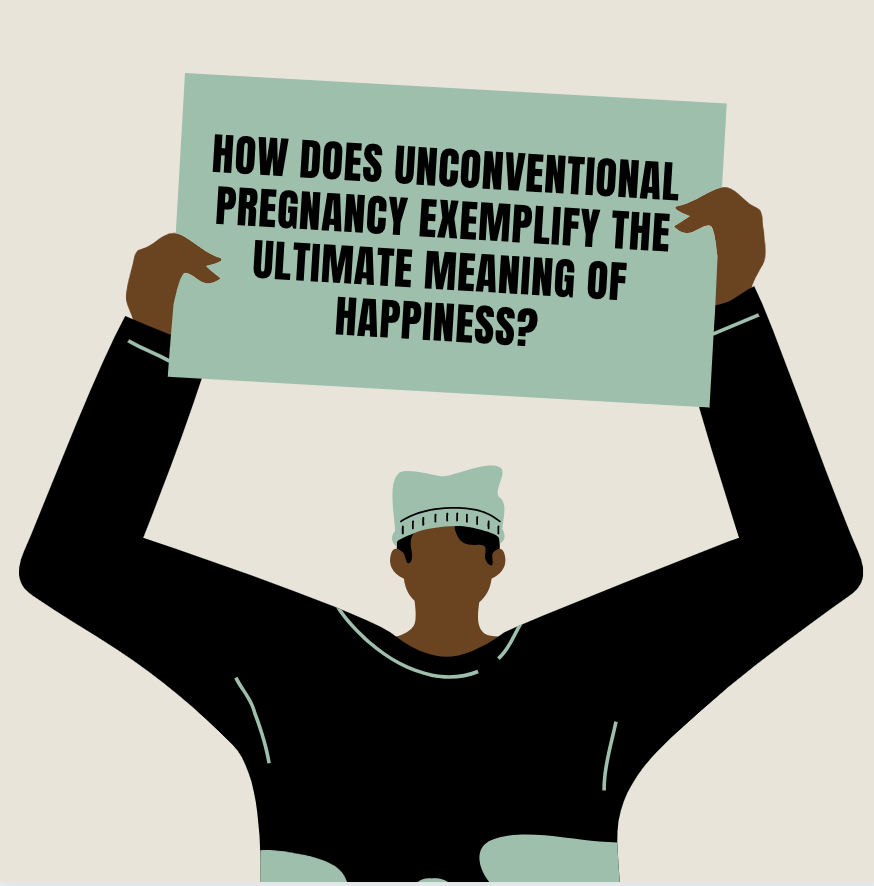
Life question: How does unconventional pregnancy exemplify the ultimate meaning of happiness? (Photo by: Jordyn Tobasky)
What do you imagine a pregnant woman looks like? Do you think of a young woman who goes to New Mommy classes with her husband and walks around the neighborhood with all of her pregnant friends? Or do you see an independent woman embarking on this journey without a spouse? The idea that there is a “right” way to get pregnant or have a child is flawed. Why is unconventional pregnancy not featured in the media? Both ways work to reach the same goal: to bear a child. While the idea of having a child by yourself, as an older working woman, is attached to negative connotations, it represents what it means to pursue one’s desires and happiness. Hardworking and devoted 43-year-old Lily has shown us how she has worked to achieve her peak happiness in life and empowers us to reject these socially constructed notions of what the correct path to motherhood is. Lily pursued the IVF insemination process for three years on her own. Throughout this article, I will take you through her journey and allow you to see how unconventional pregnancies exemplify the ultimate meaning of happiness.
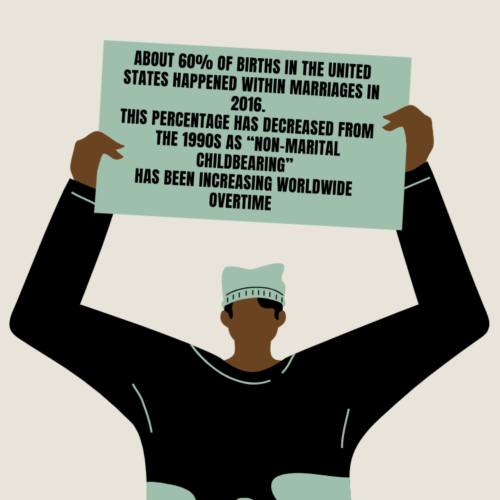
Births occurring within marriages have decreased in recent years. (Photo by: Jordyn Tobasky)
Over the course of three years, Lily had 6 intrauterine inseminations (during which doctors inseminate an individual with sperm through a catheter), endured copious amounts of injections in order to increase her hormone levels to produce more eggs, and suffered more than three miscarriages. Lily also turned to acupuncture and other alternative forms of medicine to help her chances of becoming pregnant. Due to her age, Lily had fewer eggs, making her IVF process more difficult. The donor sperm came from a Cryobank, a sperm bank that Lily says “is almost like Match.com for sperm with pictures of babies.” Lily knew that going through this process at 40 would be a difficult, lengthy journey but she was confident that becoming a mother was the right thing for her to do. Her friends, a majority of whom had their babies ten years before, were extremely supportive of her. She did not know any other women who were going through similar IVF journeys as her but Lily remained confident and positive throughout with the help of a supportive community of family and friends.
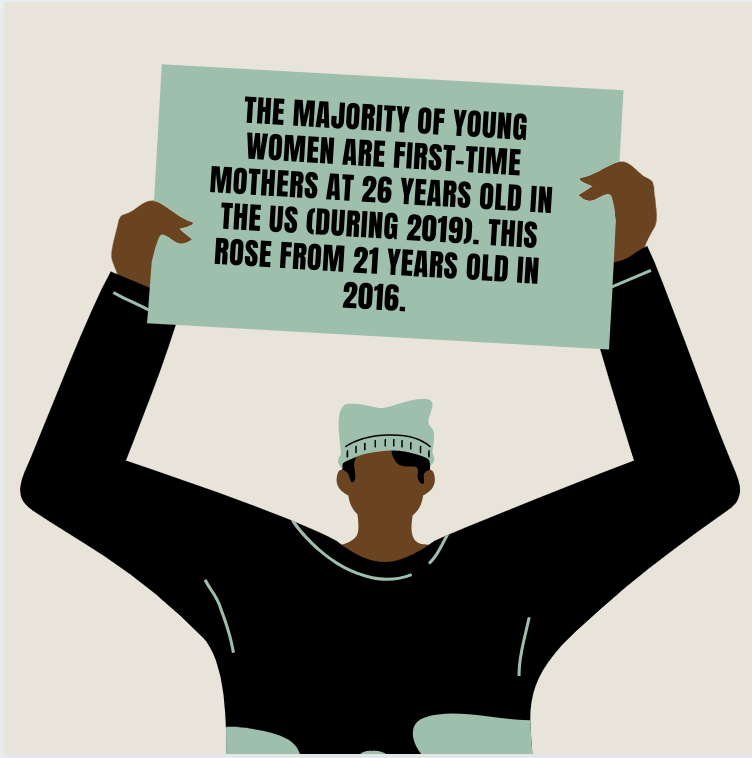
The ages women are when they begin having children has been increasing in recent years. (Photo by: Jordyn Tobasky)
Thirteen rounds of IVF later, Lily still had the desire and determination to keep trying. Unfortunately, after becoming pregnant again, Lily’s doctors discovered an issue with the baby’s skull at around the thirteen-week mark. Lily was given the option of continuing her pregnancy with the hope that her baby would survive but ultimately made the difficult decision to terminate the pregnancy. Lily’s age was a factor in both the difficulty she faced becoming pregnant and the amount of complications she faced with her various pregnancies. Despite her multiple lost pregnancies, Lily, with the emotional support of her sister and mother, successfully became pregnant once again. Her sister, a mother to three girls, was especially confident in Lily’s mothering capabilities because she had watched Lily be a second mother to her daughters throughout their lives.
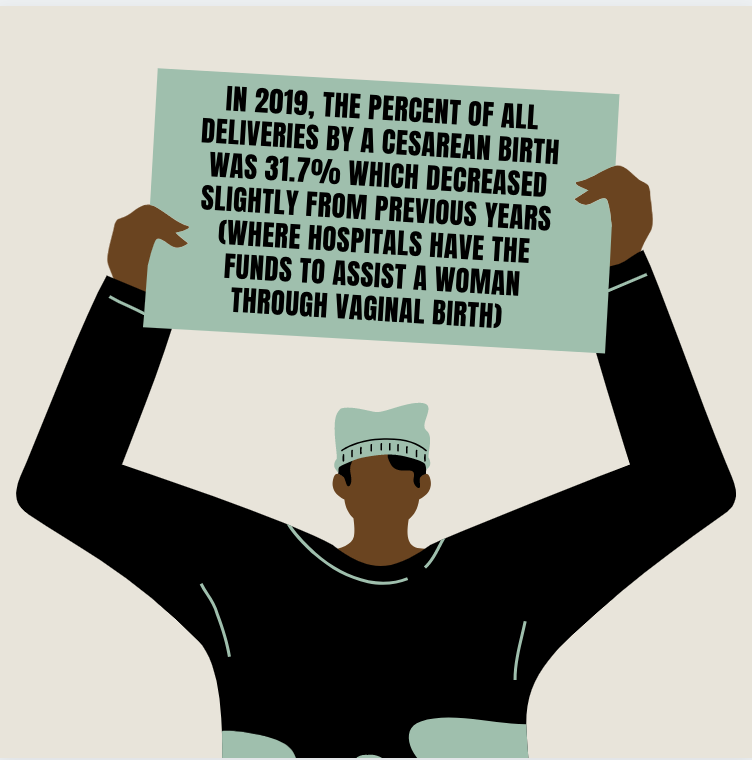
The amount of women delivering their babies by C-section is slightly decreasing. (Photo by: Jordyn Tobasky)
At eighteen weeks, Lily told her three nieces that she was pregnant. She gave the girls a white box full of pink, yellow, and blue confetti and mismatched wooden letters that spelled the word ‘PREGNANT’. Overjoyed, with tears streaming down her face, Lily smiled and told the girls that she was going to be a mother. This baby would be another sibling to the girls, something they had always dreamed about. When she was nearing the forty-week mark, Lily delivered James. Due to complications during the birth—which included an extremely long labor (around 15 hours), an infection, and the baby’s heart rate decreasing—a C-section was necessary. Lily persevered with the support of her mother and sister. Although it took her over three years and more than three miscarriages to conceive James, Lily never stopped trying, knowing that becoming a mother was a necessary path to happiness for her.
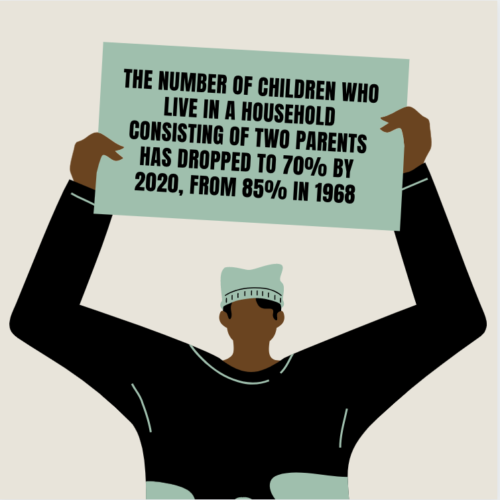
More and more children are growing up in homes with single parents. (Photo by: Jordyn Tobasky)
Throughout her experience with IVF, Lily accepted the struggles and pain she faced. Her tenacity and perseverance made it possible for her to become a mother at a much older age than her friends. Lily demonstrated that a male partner is not necessary for procreation. But Lily’s desire to become a mother reveals a deeper truth: that she was willing to go to great lengths to pursue what she thought would make her happy. According to Aristotle, happiness is the purpose of life. However, things get tricky once one realizes that there is no one path to one’s happiness. Happiness requires pain, loss, and despair; true joy is only experienced once an individual makes choices that threaten the life course that they are on. The only way to make the right choice in uncomfortable positions is to learn from one’s mistakes and to focus on the future. Lily’s story certainly demonstrates that this ethos of living is one that can yield marvelous results.
This piece was edited by Lily Plowden as part of Professor Kelley Crawford’s Digital Civic Engagement course at Tulane University.
 NOLAbeings Multimedia artist Claire Bangser created NOLAbeings as a portrait-based story project that marries...
NOLAbeings Multimedia artist Claire Bangser created NOLAbeings as a portrait-based story project that marries...  Voodoo in New Orleans: Reviving history: New Orleans fortune telling This article takes a deep dive into the history of Voodoo in New Orleans, its hybridization with Catholicism, and its present-day place in the city's culture. The author visits fortune-tellers in the French Quarter, using their guidance as a tool for introspection rather than a deterministic predictor of the future. Through her experiences in New Orleans, the author feels a mystical connection to both the past and the future.
Voodoo in New Orleans: Reviving history: New Orleans fortune telling This article takes a deep dive into the history of Voodoo in New Orleans, its hybridization with Catholicism, and its present-day place in the city's culture. The author visits fortune-tellers in the French Quarter, using their guidance as a tool for introspection rather than a deterministic predictor of the future. Through her experiences in New Orleans, the author feels a mystical connection to both the past and the future. 